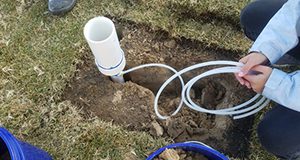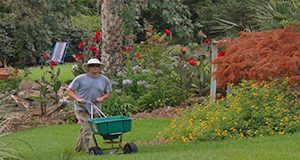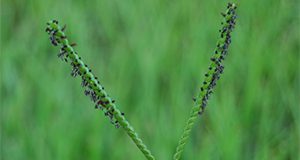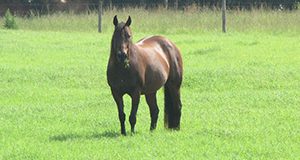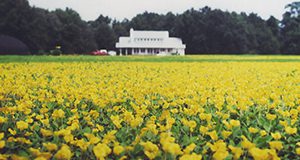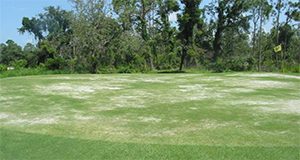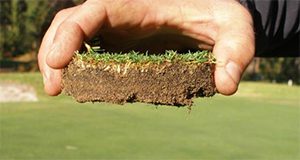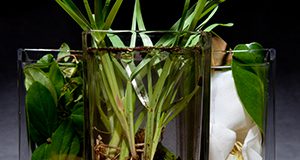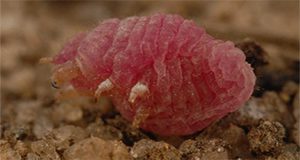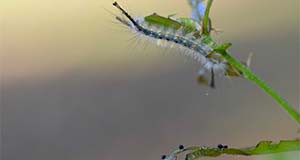Using lysimeters to collect water quality samples can provide a better understanding of nutrient or other solute migration below the surface, which can inform landscape management for environmental protection. This 6-page publication presents the materials, construction, installation, and management of a specific drainage lysimeter design in a step-by-step format. Written by Jovana Radovanovic, Eban Z. Bean, and Alexander J. Reisinger, and published by the UF/IFAS Department of Agricultural and Biological Engineering, February 2021.
https://edis.ifas.ufl.edu/ae554
Category: Turf / Sod
Urban Fertilizer Ordinances in the Context of Environmental Horticulture and Water Quality Extension Programs: Frequently Asked Questions
Excess nitrogen (N) and phosphorus (P) in water bodies are a leading cause of water quality degradation statewide. More than 50 Florida counties and municipalities now have formal fertilizer ordinances, which in some cases include fertilizer blackouts, or bans on the usage of N and P fertilizers during certain times of the year. This 8-page document provides information on the underlying issues of fertilizer use, with an emphasis on an urban setting, and outlines the current state of the science on urban fertilizers and water quality in Florida. Written by Michael D. Dukes, Lisa Krimsky, Mary Lusk, Laurie Trenholm, Bryan Unruh, Michelle Atkinson, and Rao Mylavarapu, and published by the UF/IFAS Department of Agricultural and Biological Engineering, February 2020.
https://edis.ifas.ufl.edu/ae534
Bahiagrass (Paspalum notatum Flueggé): Overview and Pasture Management
This 10-page document discusses bahiagrass forage cultivars, forage production, nutritive value, animal performance, planting, pasture renovation, management, and more. Written by Marcelo Wallau, Joao Vendramini, José Dubeux, and Ann Blount, and published by the UF/IFAS Agronomy Department, revised July 2019.
http://edis.ifas.ufl.edu/ag342
Pastures and Forage Crops for Horses
Florida's unique climatic characteristics allow for forage production most of the year with a large variety of possible forage choices. Independent of the size of the operation and number of horses, good forage planning can help reduce feeding costs, environmental impacts, and nutritional disorders caused by high-concentrate feeding. With the exception of high-performance animals, horses can meet most of their nutritional needs from pasture. However, achieving this requires careful planning and implementation of a forage production and utilization program. This 9-page document discusses intake and nutrient requirements, pasture planning, forage species, and pasture management. Written by M. Wallau, E. L. Johnson, J. Vendramini, C. Wickens, and C. Bainum, and published by the UF/IFAS Agronomy Department, revised January 2019.
http://edis.ifas.ufl.edu/aa216
Overseeding Rhizoma Perennial Peanut Pasture and Hay Fields during the Cool Season
Hay and livestock producers want to know if they can overseed their rhizoma peanut fields with cool-season forages during rhizoma perennial peanut dormancy. This new 5-page document discusses overseeding for hay and overseeding for grazing. Written by Jose Dubeux, Cheryl Mackowiak, Ann Blount, David Wright, and Luana Dantas, and published by the UF/IFAS Agronomy Department, January 2019.
http://edis.ifas.ufl.edu/ag426
Ecosystem Services Provided by Grass-Legume Pastures
Grasslands produce far more than beef and milk. They provide ecosystem services that benefit people and the environment. This new 3-page document discusses how integrating forage legumes into grasslands enhances their capacity to provide ecosystem services, such as C sequestration, habitat for wildlife and pollinators, water catchment and purification, and nutrient cycling. Written by Jose Dubeux, Jr., Lynn Sollenberger, Mark Mauldin, and Liza Garcia, and published by the UF/IFAS Agronomy Department, October 2018.
http://edis.ifas.ufl.edu/ag423
Calcium for Florida Turfgrasses
Calcium is the dominant cation in all soils of agronomic importance. This 3-page document will explain the function of Calcium in turfgrasses, describe situations where applications would or would not be of value in turfgrass management, and identify calcium sources. Written by T. W. Shaddox and published by the UF/IFAS Environmental Horticulture Department, March 2018.
http://edis.ifas.ufl.edu/ep554
Magnesium for Florida Turfgrasses
Soluble magnesium (Mg) is often applied to turfgrasses in both granular and foliar forms, and is therefore essential to understanding the function of Mg in the plant, the dynamics of Mg in the soil, and the forms of Mg fertilizers. This 3-page document discusses the function and forms of magnesium in turfgrasses. Written by T. W. Shaddox and published by the UF/IFAS Environmental Horticulture Department, March 2018.
http://edis.ifas.ufl.edu/ep555
La Grama St. Augustine para Patios de Florida
La grama o césped St. Augustine está muy adaptada a las zonas calurosas y húmedas (subtropicales) del mundo. Se cree que es nativa de las regiones costeras del Golfo de México y del Mediterráneo. St. Augustine es la especie de grama más usada en Florida. This is the Spanish-language version of ENH5/LH010, St. Augustinegrass for Florida Lawns. St. Augustinegrass is the most commonly-used lawn grass in Florida. This 10-page document describes its cultivation and management for Florida lawns. Written by L. E. Trenholm, J. B. Unruh, T. W. Shaddox, C. Balerdi, and H. Mayer and published by the UF/IFAS Department of Environmental Horticulture, January 2018.
http://edis.ifas.ufl.edu/ep552
The Fate of Nitrogen Applied to Florida Turfgrass
The quality of Florida’s surface and ground waters is of utmost importance to the flora and fauna living in them, as their growth is directly related to the amount of nutrients in these waters. In order to make informed decisions regarding nitrogen (N) applications to turfgrass, it is important to understand the N cycle in the soil/turfgrass system. The objective of this 8-page publication is to identify and describe the sources and potential fates of N applied to Florida turfgrass. Written by T.W. Shaddox and J.B. Unruh and published by the UF/IFAS Department of Environmental Horticulture, January 2018.
http://edis.ifas.ufl.edu/ep546
Iron for Florida Turfgrasses
Iron (Fe) is commonly applied to enhance turfgrass color. Understanding the dynamics of Fe both in the plant and in the soil could greatly enhance your nutrient management programs. The objective of this 4-page publication is to explain the function of Fe within the plant, describe the Fe sources available for turfgrasses, and identify which forms of Fe are most effective in improving turfgrass quality. Written by Travis Shaddox and J.B. Unruh and published by the UF/IFAS Department of Environmental Horticulture, January 2018.
http://edis.ifas.ufl.edu/ep551
Soil Testing and Interpretation for Florida Turfgrasses

Most people agree that healthy, well-maintained turfgrass is a thing of beauty. The successful growth of turfgrass is aided by having knowledge of a few basic facts concerning the nutritional requirements of turfgrasses and the properties of fertilizer and liming materials. This four-page document will help the reader understand how soil testing may be used to more efficiently manage nutrient applications for Florida turfgrasses. Written by T.W. Shaddox and J.B. Sartain and published by the UF/IFAS Department of Soil and Water Sciences, October 2017.
http://edis.ifas.ufl.edu/SS317
Nematode Management in Residential Lawns
Plant-parasitic nematodes are among the least understood and most difficult pests to manage on turfgrass in Florida. They are very small, and most can only be seen with the aid of a microscope. They use a stylet to puncture plant cells, to inject digestive juices into them, and to ingest plant fluids. The most reliable way to determine whether plant-parasitic nematodes are involved in a turf problem is to have a nematode assay conducted by a professional nematode diagnostic lab. This 6-page fact sheet was written by William T. Crow, and published by the UF Department of Entomology and Nematology.
http://edis.ifas.ufl.edu/ng039
Nematode Management on Athletic Fields
Turfgrasses are essential components of many athletic fields, racetracks, and parks. Plant-parasitic nematodes can damage athletic fields by weakening turf root systems and causing turf to pull up during play, which can create dangerous conditions for players. To help keep turf–and athletes–healthy, this 7-page fact sheet written by William T. Crow and published by the Department of Entomology and Nematology explains how to spot and manage a nematode problem in an athletic field.
edis.ifas.ufl.edu/in126
Nitrogen to Potassium Ratios for Florida Golf Courses
Golf course nutrient management programs commonly include application of both nitrogen and potassium. These macronutrients are required by turfgrass in greater quantities than any other element except carbon, hydrogen, and oxygen. This two-page fact sheet explains the Nitrogen to Potassium ratios that are best for golf courses. Written by T.W. Shaddox and J.B. Unruh and published by the Environmental Horticulture Department.
http://edis.ifas.ufl.edu/ep540
Tissue Testing and Interpretation for Florida Turfgrasses
Tissue analysis offers a precise estimate of a plant’s nutritional status at the time of sampling. Nutrient deficiencies can be detected with tissue analysis before visual symptoms appear. This three-page fact sheet describes the importance of tissue testing and how to interpret the results. Written by T.W. Shaddox and published by the Environmental Horticulture Department.
http://edis.ifas.ufl.edu/ep539
Managing Scale Insects and Mealybugs on Turfgrass
This 8-page fact sheet written by Adam Dale and published by the UF Department of Entomology and Nematology in February 2017 describes the types of scale insects and mealybugs that can become pests in turf, explains the damage they do, and lists management techniques to control them.
http://edis.ifas.ufl.edu/in1166
Nematode Management for Golf Courses in Florida
UF/IFAS is committed to providing the most current information on the notoriously difficult problem of managing nematodes on golf courses. This publication is updated and revised whenever there is a breaking development, to bring you the new information and management advice. Nine pages, revised in January 2017 by William T. Crow and published by the UF Department of Entomology and Nematology.
http://edis.ifas.ufl.edu/in124
Insect Pest Management on Turfgrass
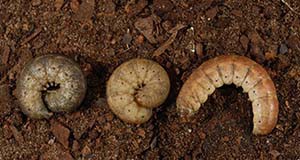
Turfgrass is grown in many environments and for different uses, including home lawns, parks, athletic fields, cemeteries, golf courses, sod farms, pastures, and right-of-ways. The intensity of turfgrass insect management largely depends on the turf species, variety, and its intended use. This eighteen-page fact sheet describes how to manage a variety of insect pests including armyworms, bermudagrass mite, cutworms, fire ants, ground pearls, hunting billbug, mole crickets, scales/mealybugs, southern chinch bug, twolined spittlebugs, tropical sod webworm, and white grubs. Written by Eileen A. Buss and Adam G. Dale, and published by the Entomology and Nematology Department.
http://edis.ifas.ufl.edu/ig001
Landscape Integrated Pest Management
Every landscape manager has a pest management toolbox, which contains tools that represent different management strategies. People can be quick to use pesticides, but an integrated approach using multiple tools can be much safer, have longer lasting beneficial effects, and in some cases cut costs. This 5-page fact sheet will help Extension agents and specialists, lawn and landscape managers, Florida Master Gardeners, and homeowners develop long-term sustainable pest management programs using an Integrated Pest Management (IPM) framework. Written by Adam G. Dale and published by the Department of Entomology and Nematology.
http://edis.ifas.ufl.edu/in109
